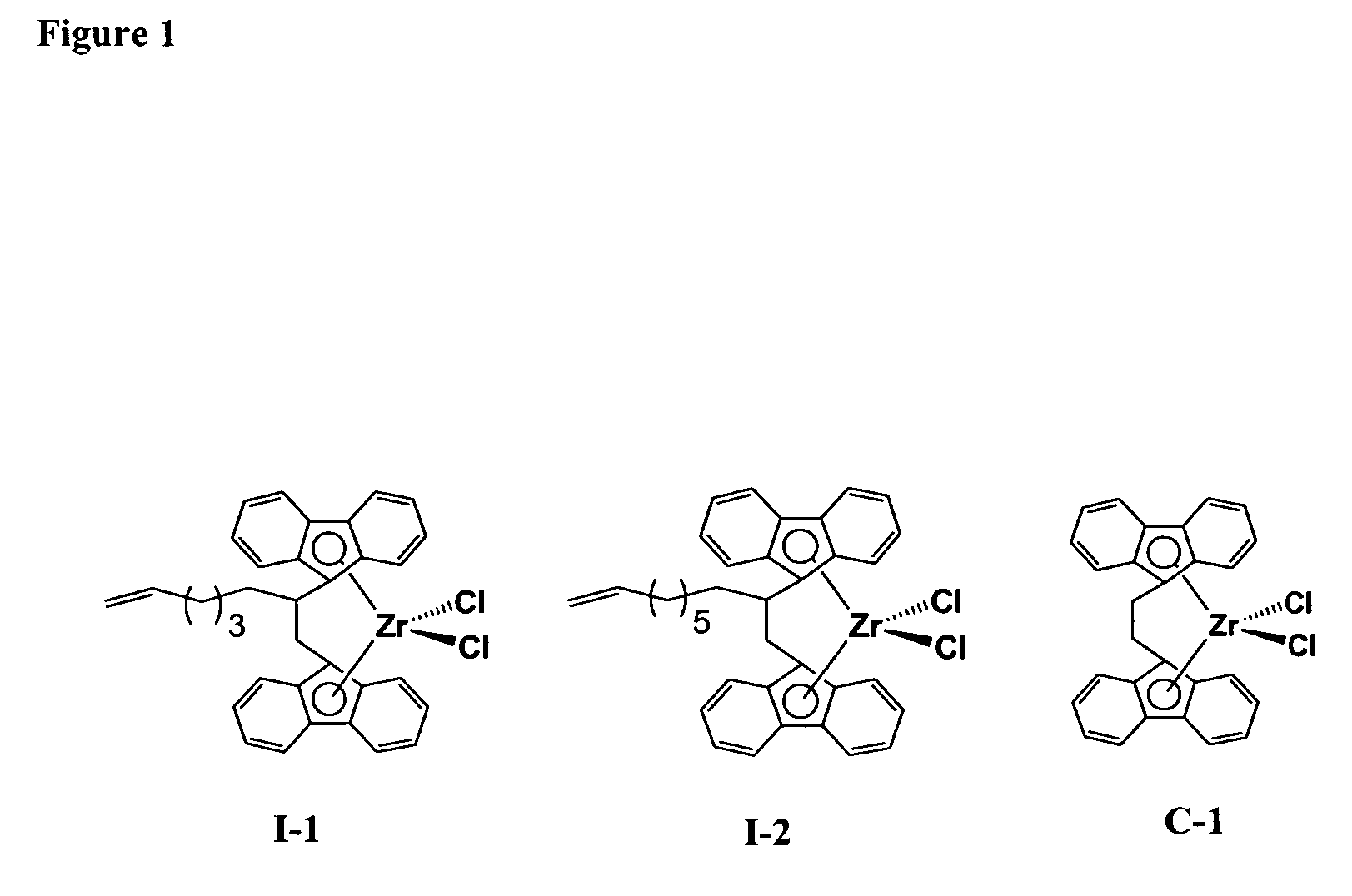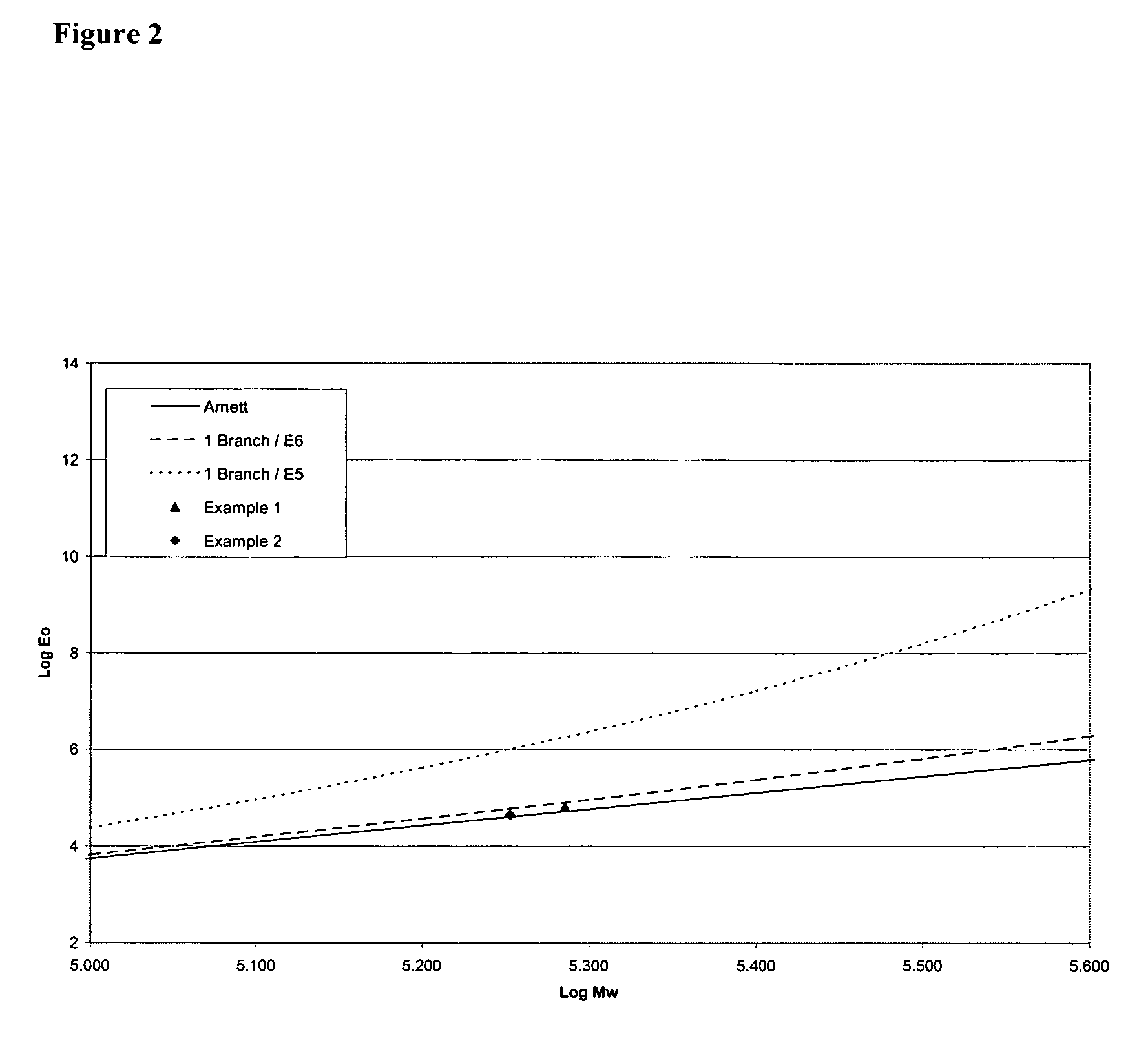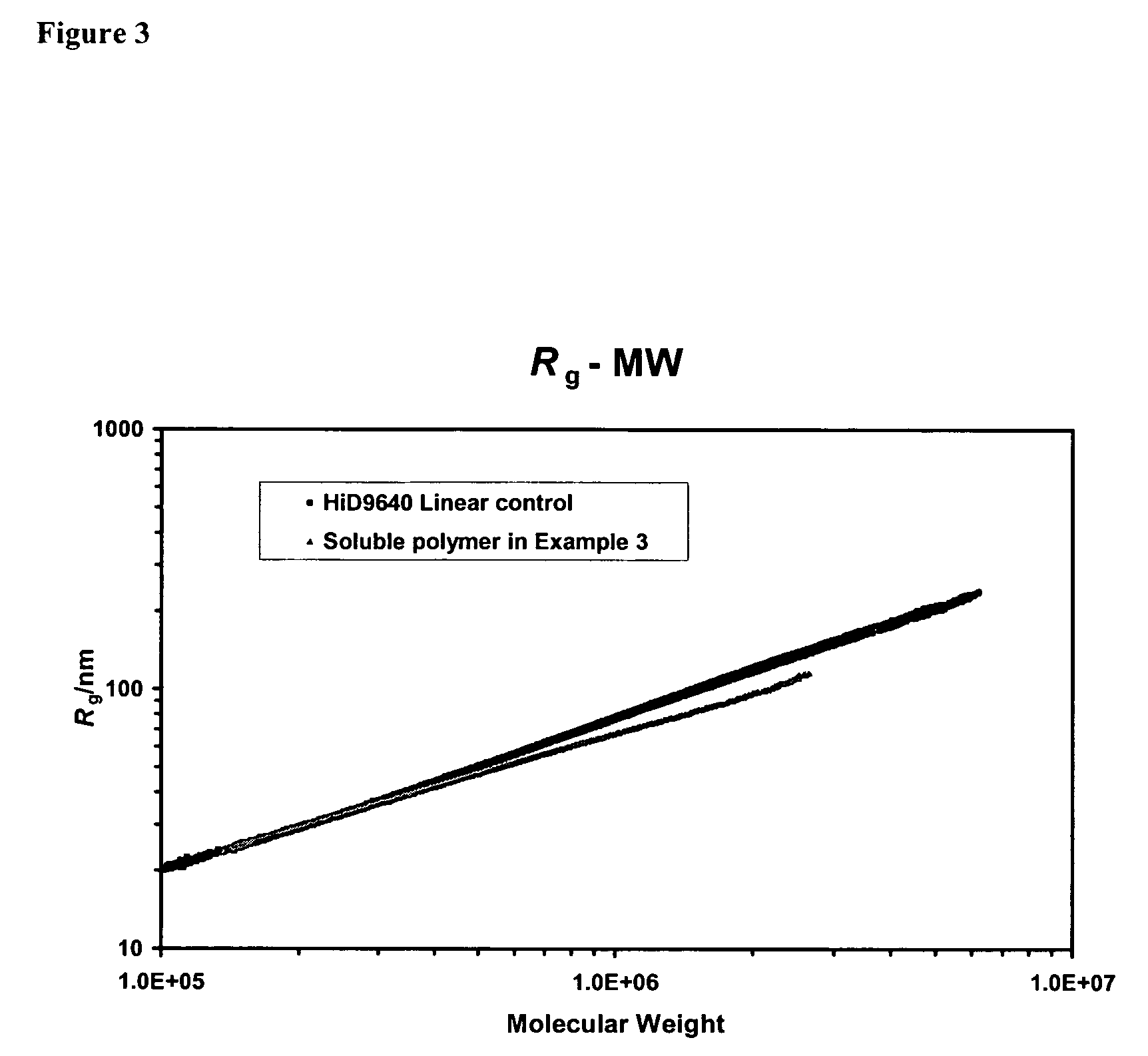Polymerization catalysts for producing polymers with low levels of long chain branching
a polymerization catalyst and long chain branching technology, applied in the direction of catalyst activation/preparation, physical/chemical process catalysts, chemical/physical processes, etc., can solve the problems of undesirable lcb presence and detrimental to film performance, and achieve the effect of improving productivity
- Summary
- Abstract
- Description
- Claims
- Application Information
AI Technical Summary
Benefits of technology
Problems solved by technology
Method used
Image
Examples
example 1
Catalytic Run Using Metallocene I-1
[0323]A metallocene solution (0.67 mg / mL) was prepared by dissolving 10 mg of the metallocene I-1 in a mixture of 2.5 mL of TEA (1M in hexanes), 2.5 mL of hexene, and 10 mL of toluene. The polymerization run was conducted in a one-gallon (3.785 liter) stainless steel reactor, using the following procedure. A sample of fluorided silica alumina (192 mg), and a sample of the I-1 metallocene solution (5 mL, 3.3 mg) that included TEA (0.83 mmol) were added in that order through a reactor charge port, while venting isobutane vapor. The charge port was closed and two liters of isobutane were added. The contents of the reactor were stirred, the reactor was heated to 80° C., and ethylene was then introduced into the reactor along with 25 g of hexene. Ethylene was fed on demand to maintain the reactor pressure at 450 psi for a reaction time of 60 min. The reactor was maintained at 80° C. through the run by an automated heating-cooling system. Polymerization ...
example 2
Catalytic Run Using Metallocene I-2
[0324]A metallocene solution (0.66 mg / mL) was prepared by dissolving 15.5 mg of metallocene I-2 in a mixture of 4 mL of TEA (1M in hexanes), 4 mL of hexene, and 15.5 mL of toluene. The polymerization run was conducted in a two-liter stainless steel reactor, using the following procedure. A sample of fluorided silica alumina (200 mg), and a sample of the I-2 metallocene solution (4 mL, 2.6 mg) that included TEA (0.68 mmol) were added in that order through a reactor charge port, while venting isobutane vapor. The charge port was closed and 1.2 liters of isobutane were added. The contents of the reactor were stirred, the reactor was heated to 80° C., and ethylene was then introduced into the reactor along with 25 g of hexene. Ethylene was fed on demand to maintain the reactor pressure at 450 psi for a reaction time of 30 min. The reactor was maintained at 80° C. through the run by an automated heating-cooling system. Polymerization conditions and poly...
example 3
Catalytic Run Using Metallocene C-1
[0325]A metallocene solution (0.67 mg / mL) was prepared by dissolving 10 mg of the metallocene C-1 in a mixture of 2.5 mL of TEA (1M in hexanes), 2.5 mL of hexene, and 10 mL of toluene. The polymerization run was conducted in a one-gallon (3.785 liter) stainless steel reactor, using the following procedure. A sample of fluorided silica alumina (200 mg), and a sample of the C-1 metallocene solution (4 mL, 2.7 mg) that included TEA (0.67 mmol), and additional TEA (0.1 mL of 1M solution in hexanes) were added in that order through a reactor charge port, while venting isobutane vapor. The charge port was closed and 1.8 liters of isobutane were added. The contents of the reactor were stirred, the reactor was heated to 80° C., and ethylene was then introduced into the reactor along with 25 g of hexene. Ethylene was fed on demand to maintain the reactor pressure at 450 psi for a reaction time of 60 min. The reactor was maintained at 80° C. through the run ...
PUM
| Property | Measurement | Unit |
|---|---|---|
| temperature | aaaaa | aaaaa |
| temperature | aaaaa | aaaaa |
| temperature | aaaaa | aaaaa |
Abstract
Description
Claims
Application Information
 Login to View More
Login to View More - R&D
- Intellectual Property
- Life Sciences
- Materials
- Tech Scout
- Unparalleled Data Quality
- Higher Quality Content
- 60% Fewer Hallucinations
Browse by: Latest US Patents, China's latest patents, Technical Efficacy Thesaurus, Application Domain, Technology Topic, Popular Technical Reports.
© 2025 PatSnap. All rights reserved.Legal|Privacy policy|Modern Slavery Act Transparency Statement|Sitemap|About US| Contact US: help@patsnap.com



